As we were winding up our visit to Ushuaia, we realized that we were getting close to our 90 days on our Argentinian visa and also needed to find someplace to celebrate Jake’s birthday. Since we had to fly back to Buenos Aires to get anywhere else anyway, we decided to take the ferry across the river into Uruguay. Uruguay is just north of Buenos Aires sandwiched in between the monsters of Brazil and Argentina. Because of their much larger neighbors, Uruguayans feel their country doesn’t get the attention and respect it deserves. We spent 3 days in Colonia del Sacramento and the capital of Montevideo.
Colonia del Sacramento
Colonia is a small town that has a charm that is all its own. Two different services run ferries between Buenos Aires and Colonia, about a one hour journey. It is important to note that while both ferries stop at the same terminal in Colonia, they do not disembark from the same terminal in Buenos Aires. I mention this because we found out the hard way. We didn’t specify at the hotel when we ordered a cab, exactly which ferry we were taking. The cab was also terribly late and the traffic between our hotel and the riverfront was frightful. The combination meant that we were going to barely catch our boat if at all. We arrived at the ferry terminal with our tickets already purchased, but couldn’t find the name of our ferry company anywhere in the building. Long story short, we were in the wrong place, missed the boat and ate the tickets, and booked the afternoon ferry from the terminal we were in. Rough start to our journey. To top it off, the new ferry arrived at the terminal to load about an hour late. It was a long morning sitting in the very lovely but initially wrong ferry terminal. When you travel constantly, you’re going to have days like that. Fortunately, our efforts were well worth the sacrifice. What we found on the other end of the ferry ride when we eventually got there was idyllic. Here’s a picture of the ferry as it left after delivering us to Colonia.

The town is small enough that we walked from the ferry terminal to our hotel, and then down to the riverfront. To get there, you pass by and through the old fortress walls built by the Portuguese to keep out the Spanish.
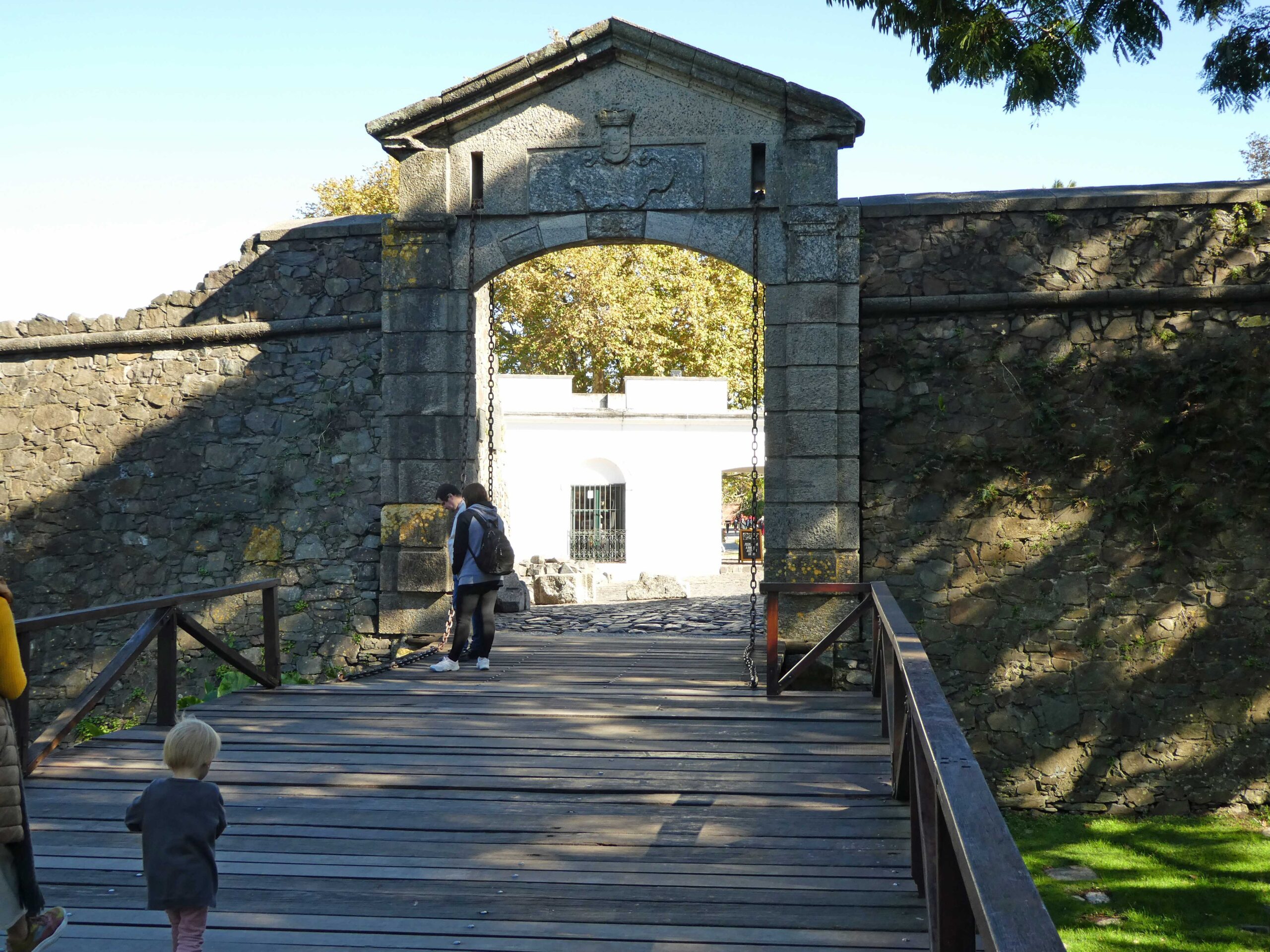
The walk is lovely and affords the opportunity to take in the shoreline with views of the old lighthouse.
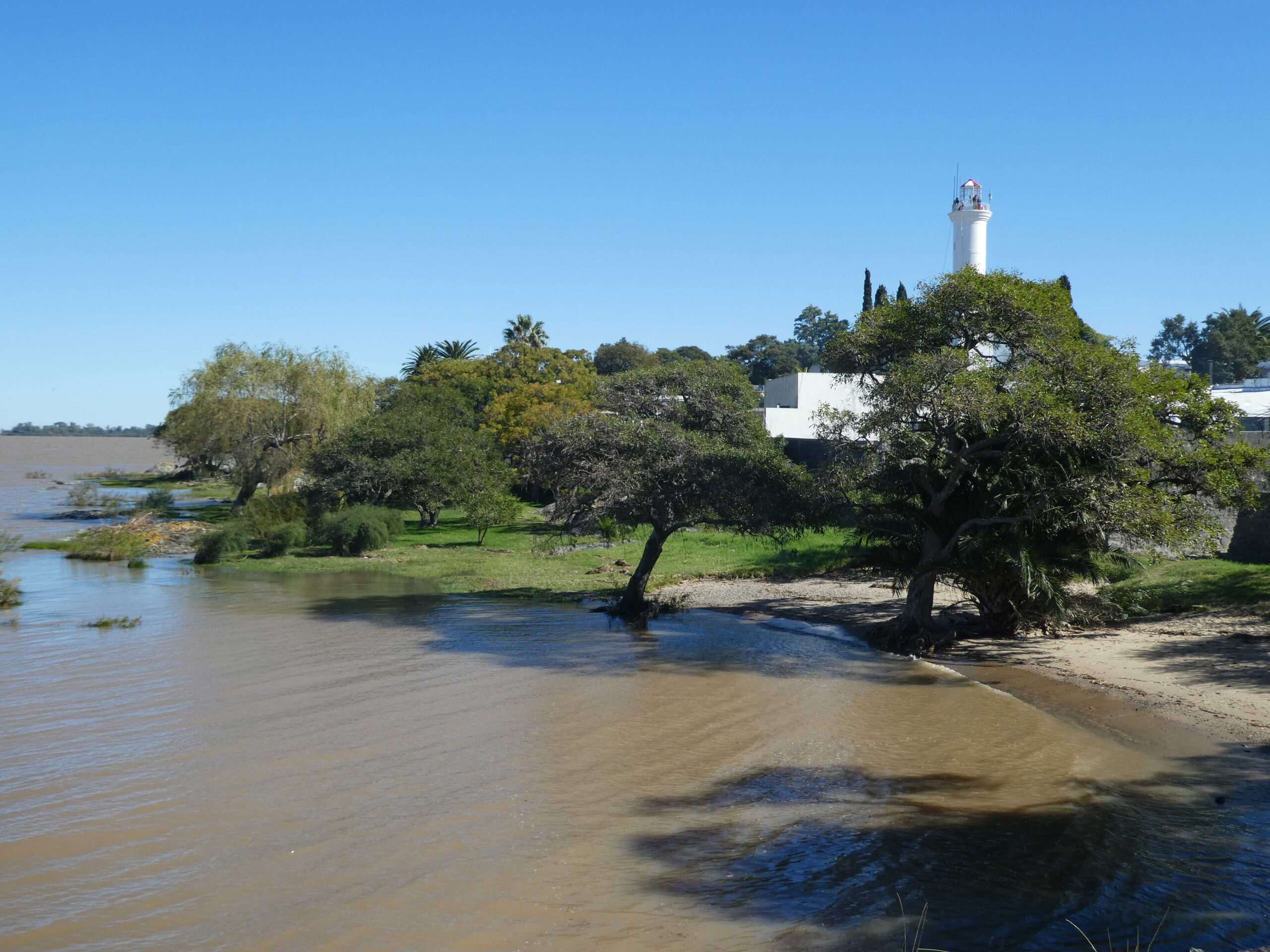
You’ll notice that the water is a chocolate brown. The source is a vast river delta, which we visited when we went to Tigre. While I’m sure there’s a bit of pollution as with any waterway running through major cities, the color is created primarily by the Paraná Delta sediment.
The little town on the river is populated by colonial-style buildings and cobbled streets lined with bougainvillea. Here’s a couple pictures from our wanderings from our hotel to the main riverfront area.
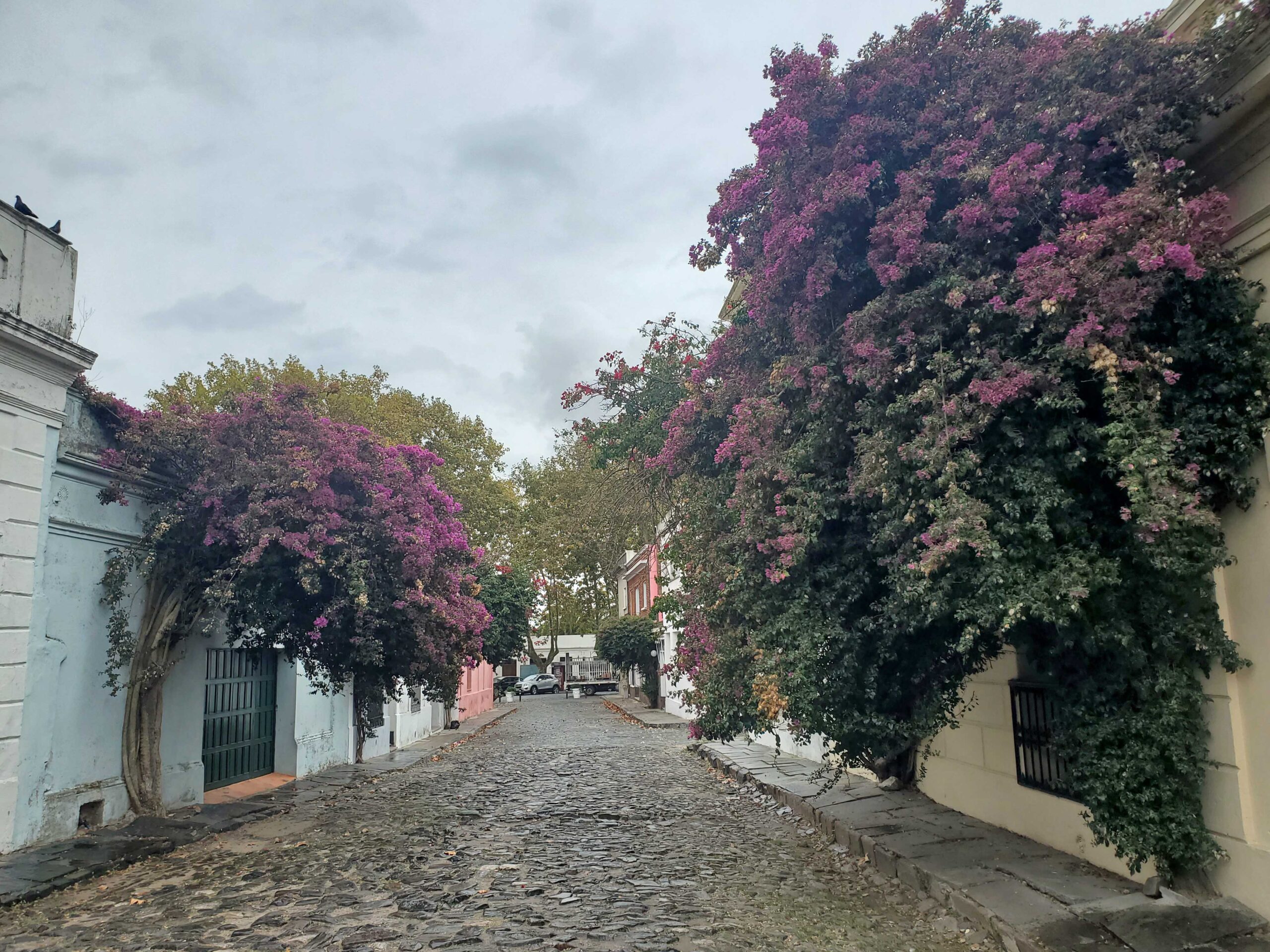

Another “feature” of Colonia is derelict cars. “Oh, wonderful,” I can hear you saying, but it isn’t what you think. They’re mostly all historic and add a unique element to the town we’ve never seen anywhere else.
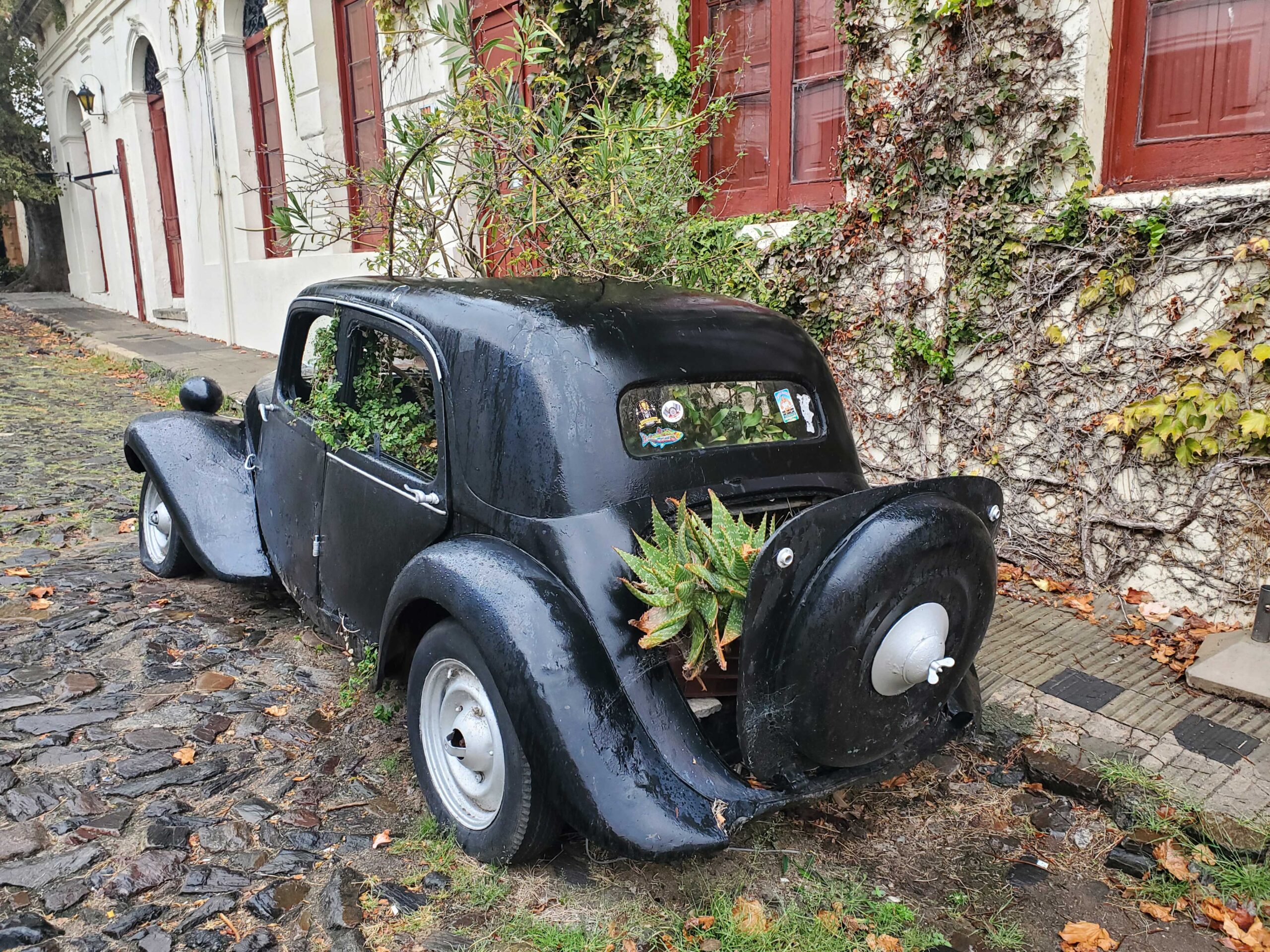
As I mentioned before, the stroll from the ferry terminal and through town leads to the riverfront, which is a gathering place for tourists and residents alike. It is bordered by a concrete guard rail in the Colonial style complete with stairs down to the sandy beaches below.

The tower in the image above somewhat obstructed by the trees is actually a restaurant where we found ourselves sitting, drinking beer, and enjoying the goings on in the life of Colonia.
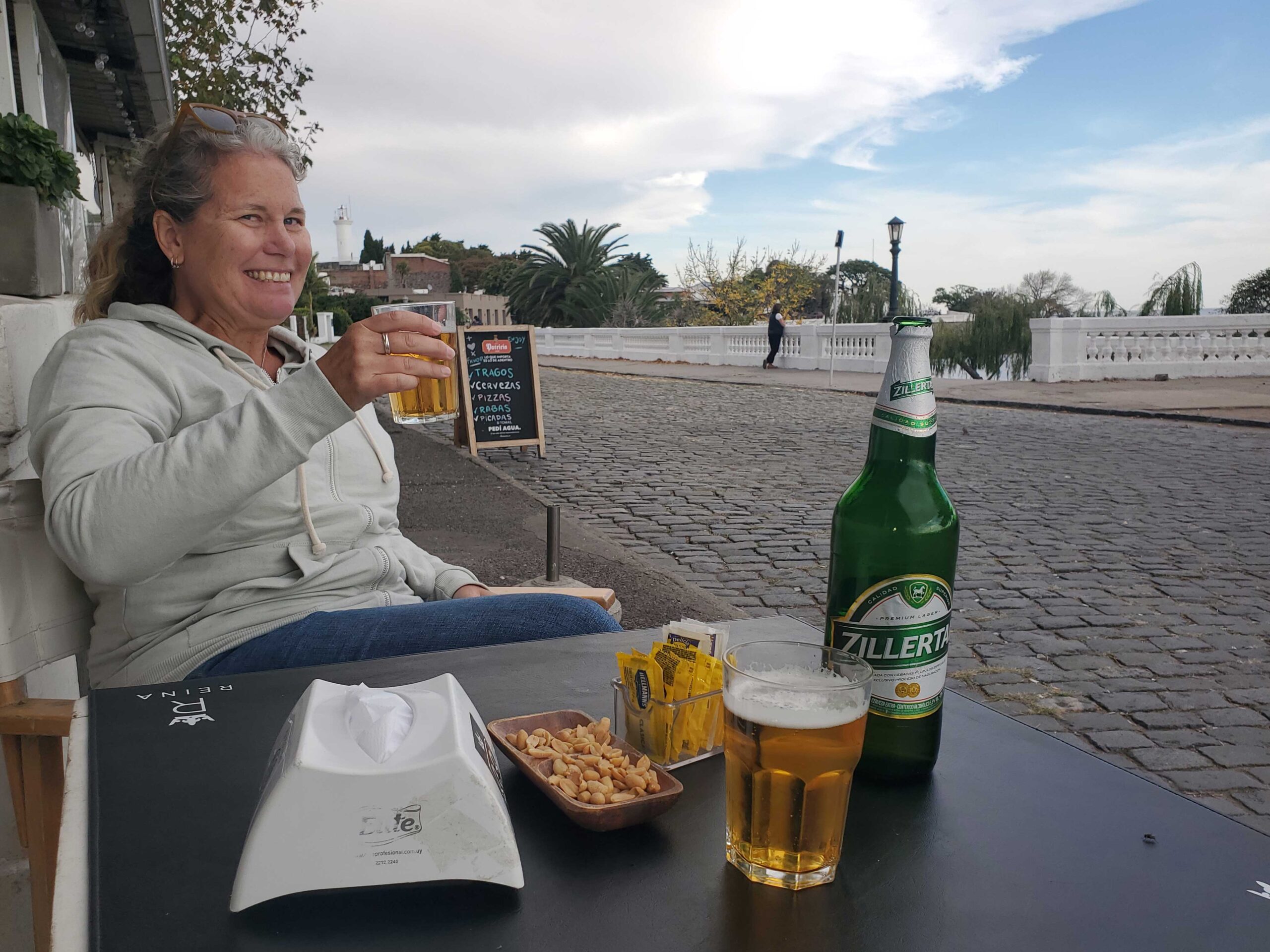
One of the funnier sights we saw during our time watching the world go by was the common transportation around town. Instead of rental cars, why not just cruise around town in a golf cart?

You’ll notice that even though the method of conveyance is different, the behavior remains the same. She is clearly texting and carting. Watch out everyone on the road!! Lest you think this is a rare occurrence, we actually walked by the Cart Rental later in the day.
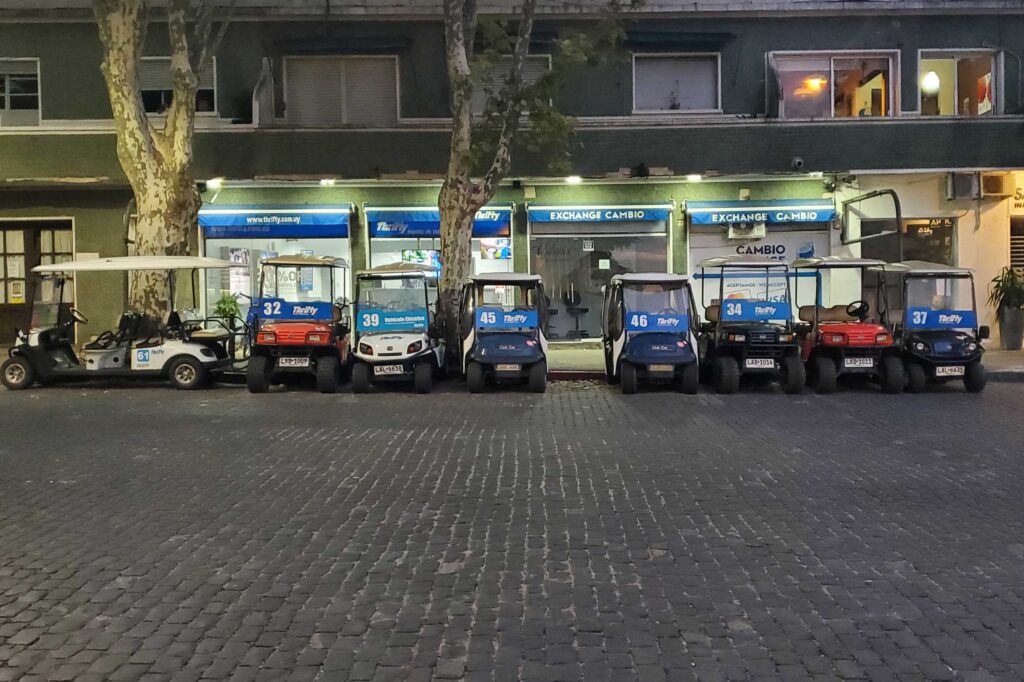
You’ll notice from the lighting that we arrived in late afternoon to our spot on the bar patio overlooking the riverfront and stayed there as the sun was going down. What else could we do? The reward was this.

And, aside from some great restaurants and multiple tiny museums of various topics, that’s about all there was to do in Colonia. We filled three days with wandering the town and sampling the food and wine.
Montevideo
The Uruguayan capital of Montevideo is a three-hour bus ride from Colonia. The space in between is filled with green farmland and pristine little settlements. It was green and clean and impressive–which made what we found in Montevideo confusing and surprising. We don’t want to be down on Montevideo, but it lacked the charm and vibrancy of Colonia. We’ll admit that we arrived on a Sunday night and the town wasn’t very lively early in the week during our stay, but you just get a feel for the vibe of the place. Montevideo was actually lacking a vibe. There was sort of a melancholy that permeated the town and its people. It didn’t help that they were also loading sheep onto ships at the docks near our hotel and the whole town smelled like manure when the wind was blowing the wrong way. Awesome.
We did find some good restaurants and had some excellent food. We walked and explored the old town area, and although “decorated” with graffiti everywhere that wasn’t necessarily meant to be artistic, there were remnants of what must have been. It was odd, kind of like they just didn’t bother with the historc area anymore.
Here’s a view of the sunset and the city skyline looking toward the dock taken from the rooftop patio of our really, really lovely hotel.
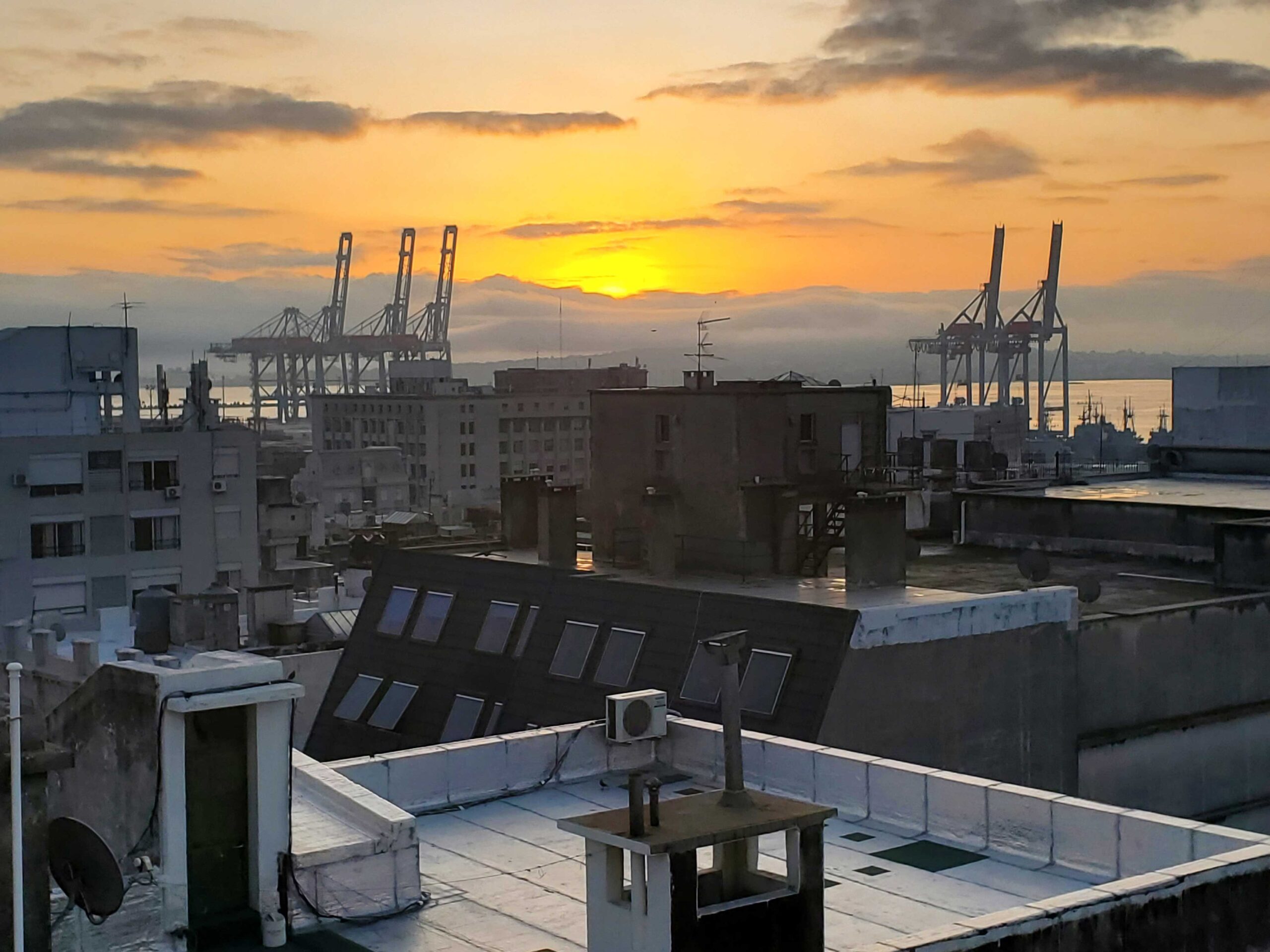
Here’s another shot taken from the roof that gives a view of some of the local architecture. There was beauty to be found, but one had to look.

The city is surrounded by the rambla, which is touted as the longest continuous sidewalk anywhere in the world, if my memory is correct. It runs along the entire waterfront of the city and leads to the beaches. Whenever we went out for a walk, there were always fishermen everywhere! Anyplace with that much fishing can’t be too bad.
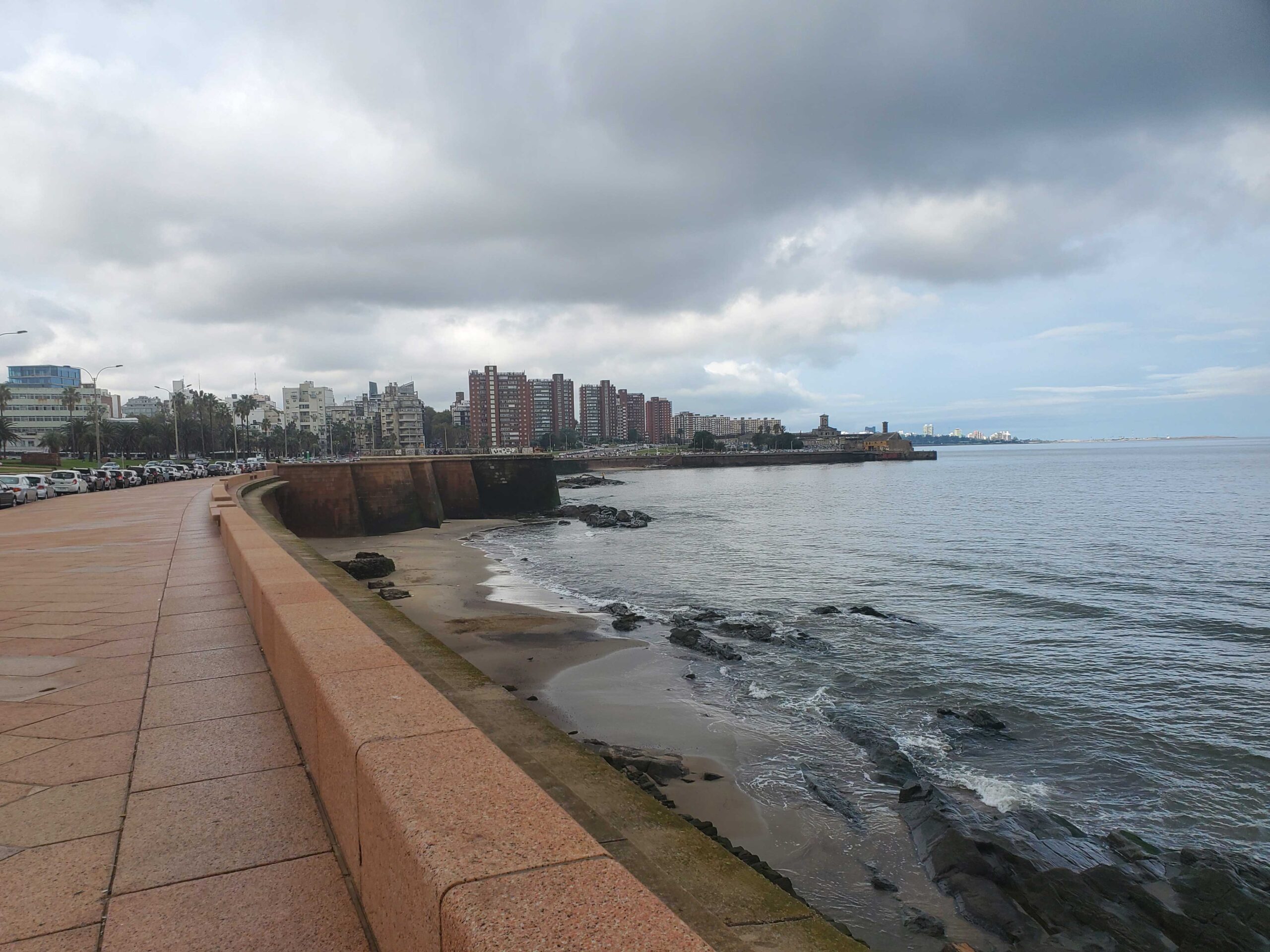
In the pictures behind the rambla and the fishermen, you’ll notice the almost uniform high-rise condo buildings that also run the length of the waterfront. This seemed to be the predominant architecture, and there were some very nice apartments with fabulous views, but pretty uniform.

The weather was kind of dreary and rainy, which certainly affected our impression of the city. We did take a walk from our hotel along the main pedestrian street to the town square and took picture of the buildings along the way. Here’s the pedestrian shopping area with the iconic art style of native artist Joaquín Torres-García.
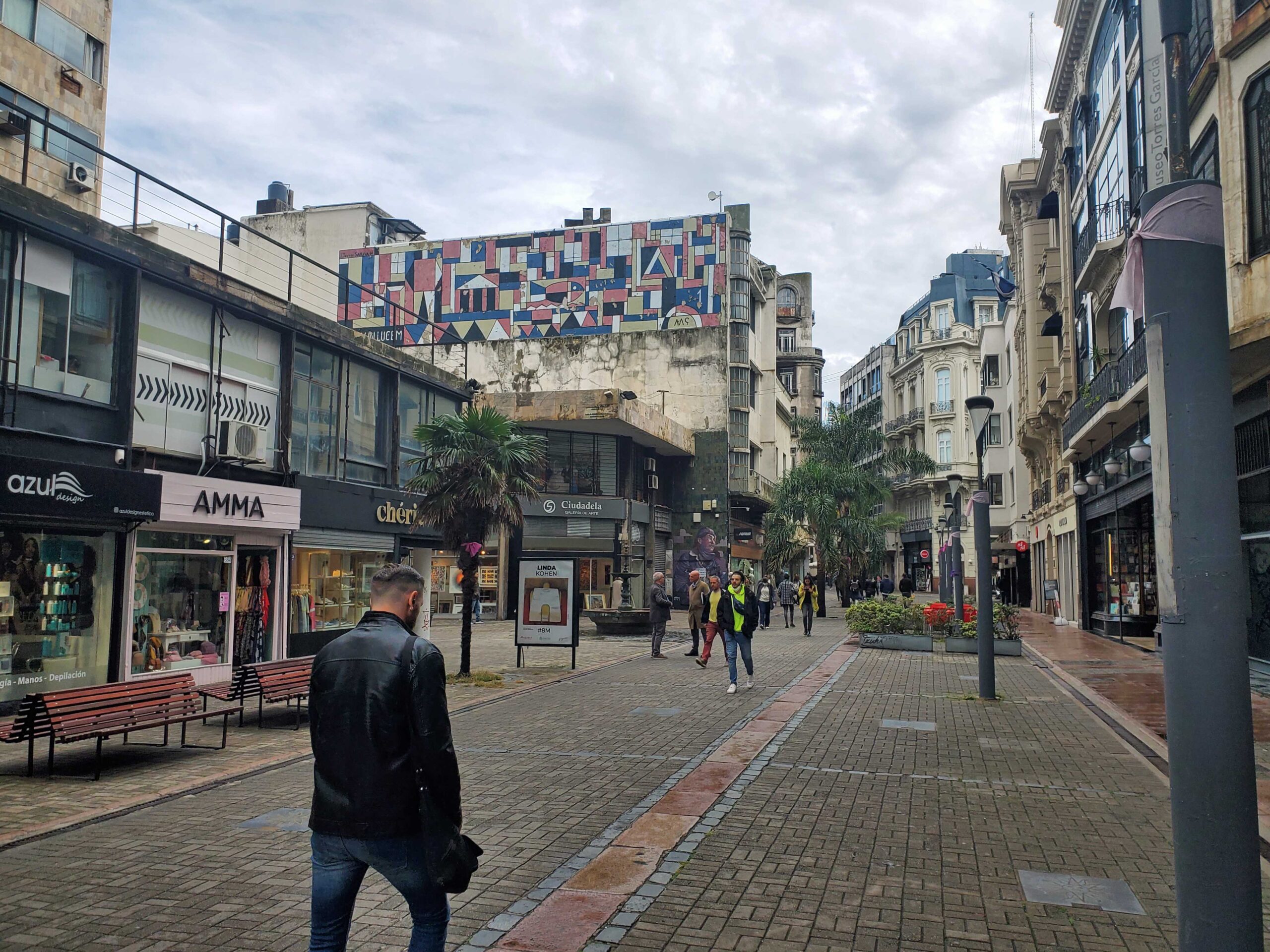
The pedestrian walkway ends in the central square where we took pictures of some of the historic architecture.
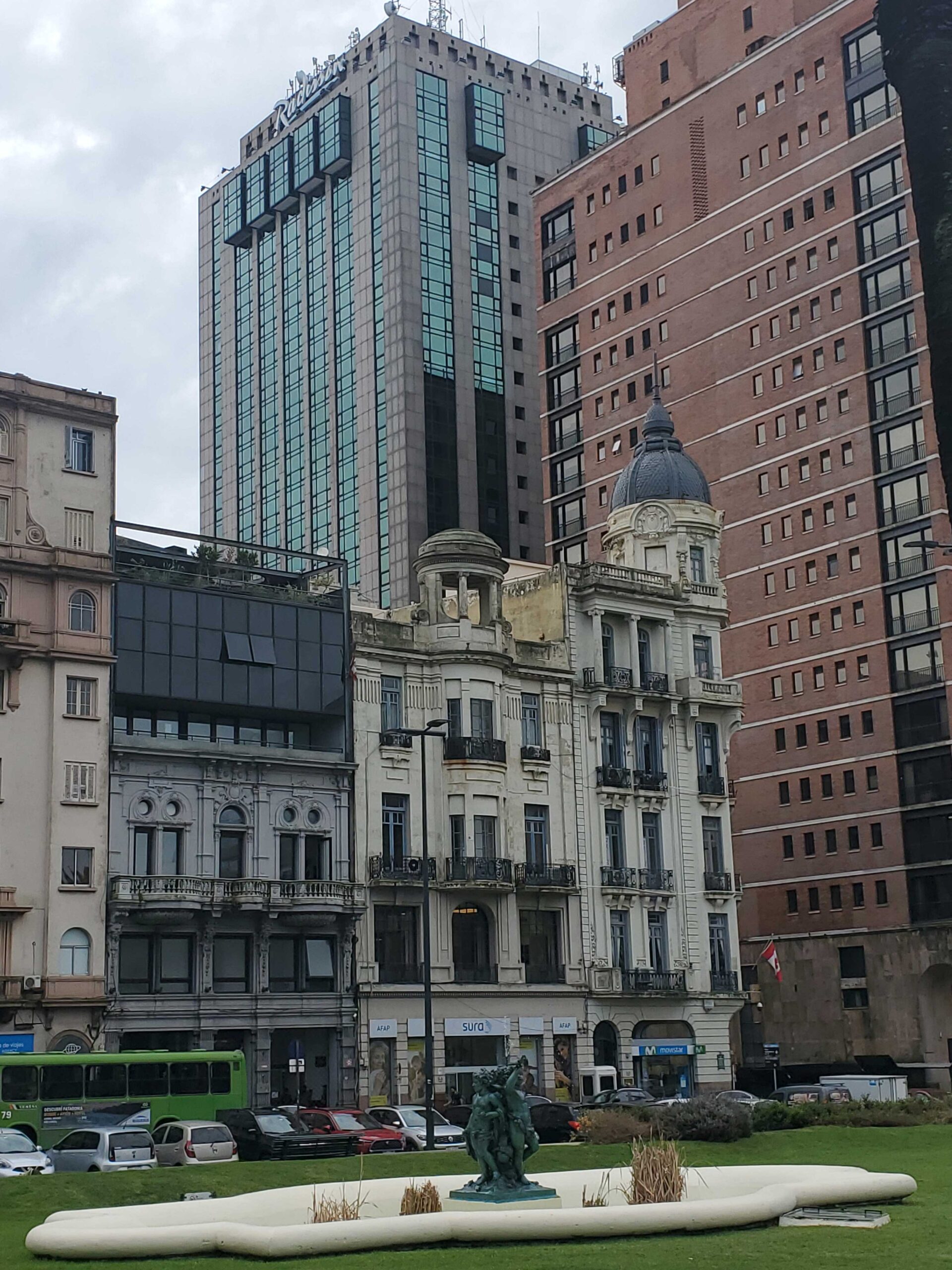
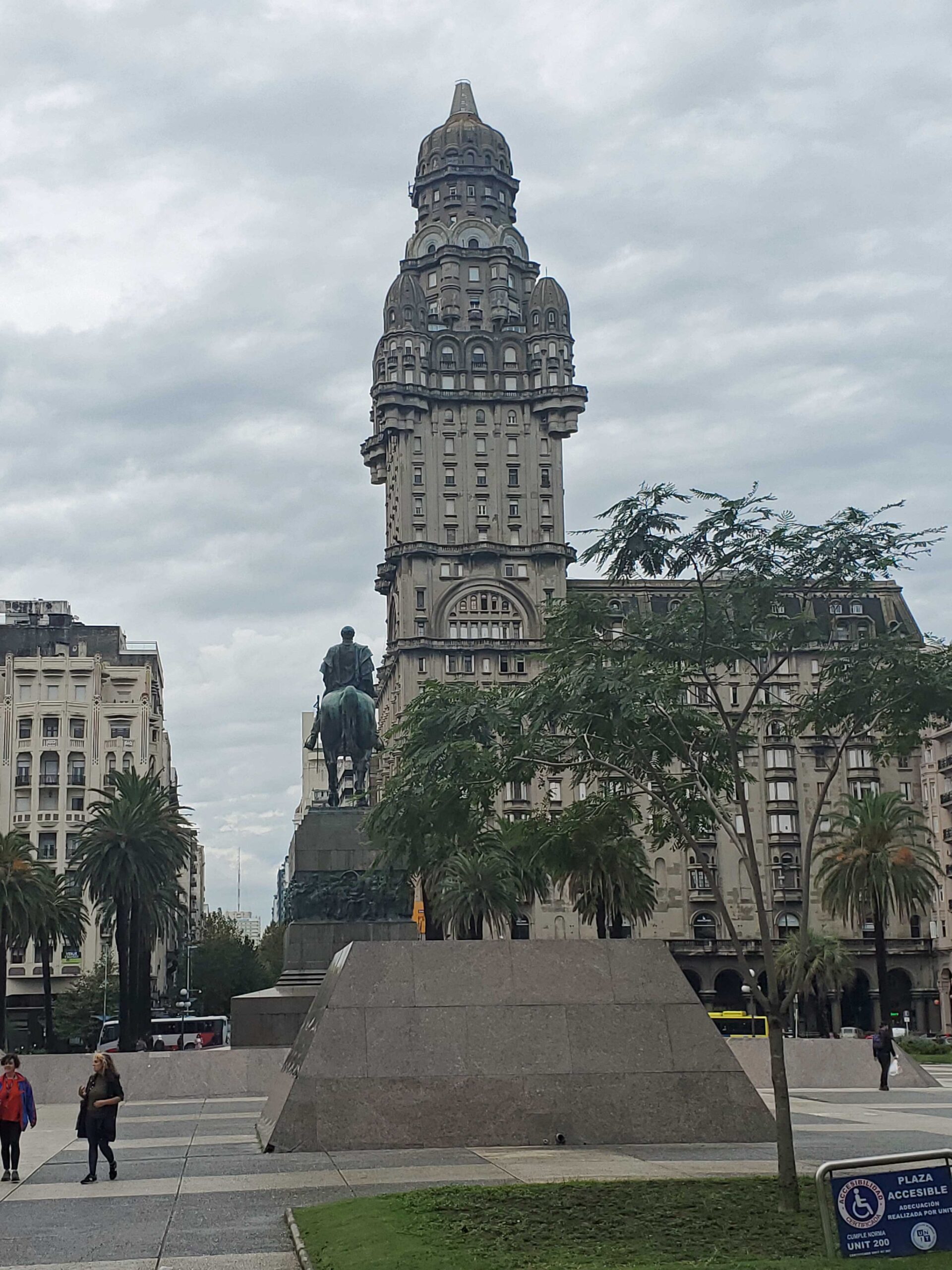
We were lucky that the clouds broke on our last day there and we caught a glimpse of the sunshine that Montevideo is famous for in the summer. If you travel outside of town, there are other beaches with upscale condos and restaurants. We certainly did not get the best of the town in the three days we were there. Any city with a beach right at its heart, can’t be all that bad.

The beaches are vast, sunny, and warm. And while it is still technically the transition point between the river and the ocean, the water was much clearer than in Colonia. The further you travel up the coast, the more true oceanfront you get on the beaches. We both feel we need to give Montevideo a second chance at some point in the future when Covid is a distant memory and the high season is in full swing.
Our six days in Uruguay ended with a “Planes, Trains, and Automobiles” day. We took a bus three hours back to Colonia, caught the ferry back across to Buenos Aires, took a taxi to the airport from the ferry dock, and caught a plane to Salta. We’ll catch up on that journey in another post.
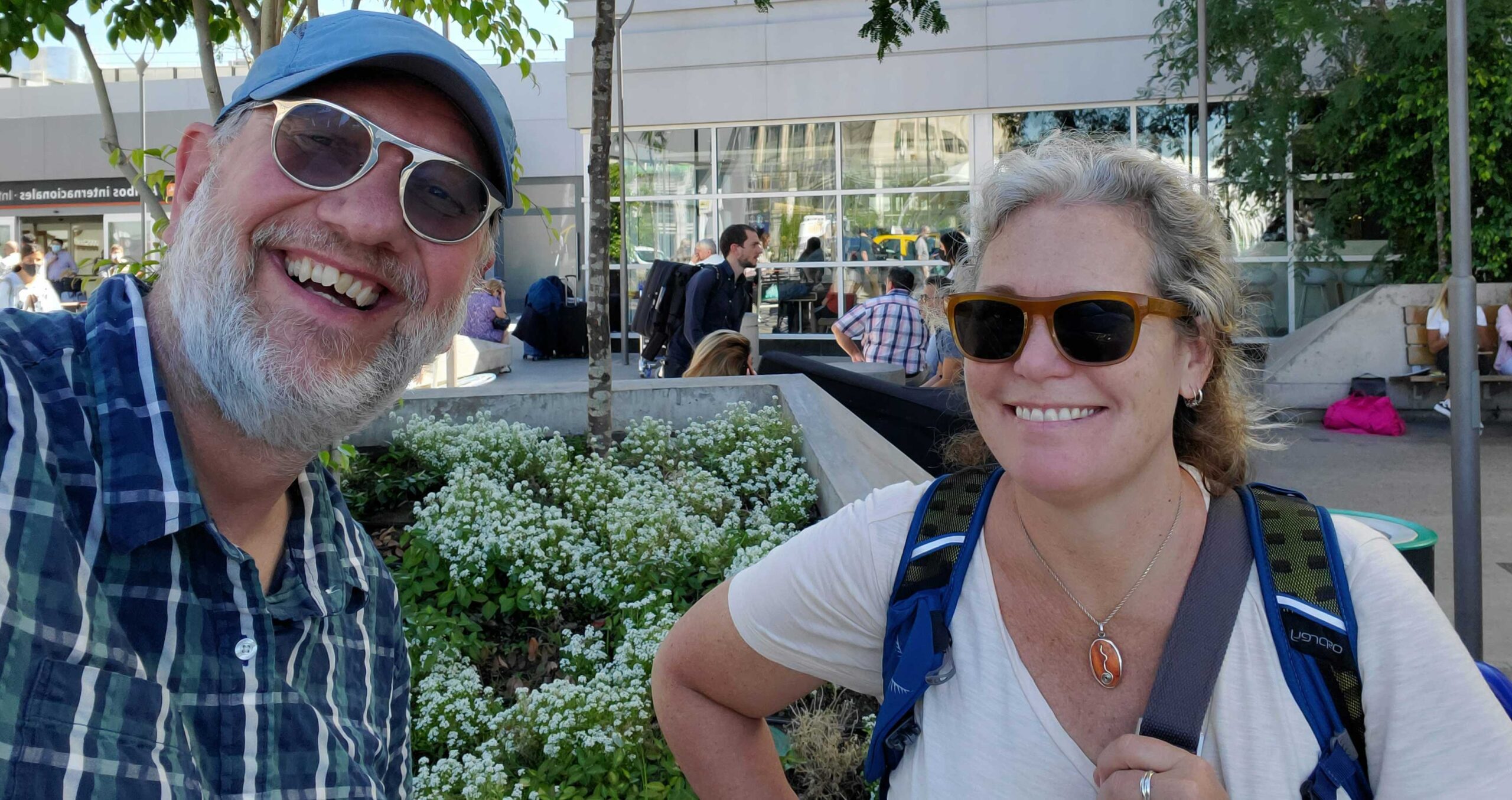
Busy long days!
Love the old carts and cars! So unique!
And the beach definitely looks return-worthy.
Montevideo certainly has some nice beaches, and we weren’t there at the best of time nor did we journey out to them. Definitely worthy of a return.